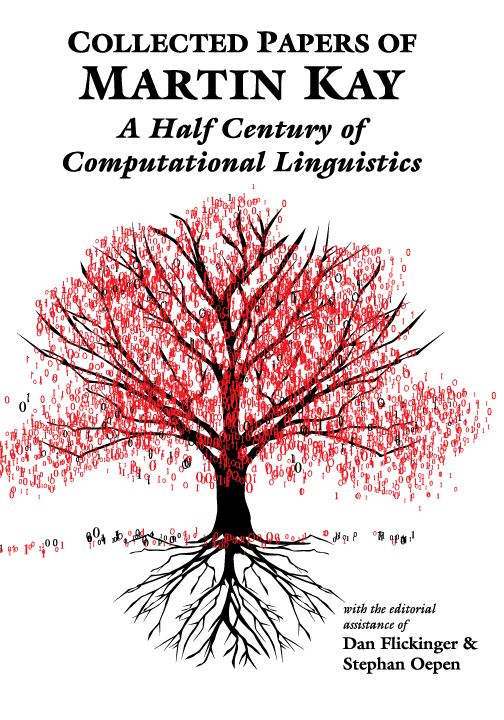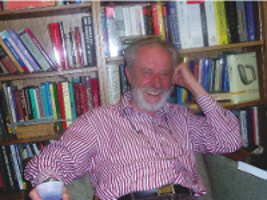

|
|
|
|

Collected Papers of Martin KayA Half-Century of Computational Linguistics Since the dawn of the age of computers, researchers have been pushing the limits of available processing power to tackle the formidable challenge of developing software that can understand ordinary human language. At the forefront of this quest for the past fifty years, Martin Kay has been a constant source of new algorithms that have proven fundamental to progress in computational linguistics. Martin Kay's Half-Century of Computational Linguistics, the premier comprehensive collection of his works, opens a window into the growth of this important and increasingly fruitful field of scientific research and development. Combining a sharp wit with the remorseless logic of a mathematician, Kay addresses topics ranging from machine translation to the proper design of electronic dictionaries, from chart parsing to unification. Kay also offers a well-informed perspective on which natural language processing research challenges to tackle next, and how. This book will be important for computational linguists and students, and illuminating for readers with an interest in the central role of language processing in the future of the Internet.  is one of the preeminent computational linguists in the
world, having helped to shape and advance this field for the past
fifty years. He is currently the Chair of the International
Committee
on Computational Linguistics, and the former Chair of the
Association
for Computational Linguistics. Born and raised in the United
Kingdom,
he received his M.A. from Trinity College, Cambridge, in 1961. In
1958
he started to work at the Cambridge Language Research Unit, one of
the
earliest centers for research in what is now known as computational
linguistics. In 1961, he moved to the Rand Corporation in Santa
Monica, California, where he eventually became head of research in
linguistics and machine translation. He left Rand in 1972 to become
Chair of the Department of Computer Science at the University of
California, Irvine. In 1974, he moved to the Xerox Palo Alto Research
Center as a Research Fellow. In 1985, while retaining his position at
Xerox PARC, he joined the faculty of Stanford University half-time. He
is currently Professor of Linguistics at Stanford University and
Honorary Professor of Computational Linguistics at Saarland
University. He holds an honorary doctorate of Gothenburg University.
In 2005, he received the Lifetime Achievement Award of the Association
for Computational Linguistics for his sustained role as an
intellectual leader of NLP research. His research interests include
translation, both by people and machines, and computational
linguistics algorithms, especially in the fields of morphology and
syntax.
is one of the preeminent computational linguists in the
world, having helped to shape and advance this field for the past
fifty years. He is currently the Chair of the International
Committee
on Computational Linguistics, and the former Chair of the
Association
for Computational Linguistics. Born and raised in the United
Kingdom,
he received his M.A. from Trinity College, Cambridge, in 1961. In
1958
he started to work at the Cambridge Language Research Unit, one of
the
earliest centers for research in what is now known as computational
linguistics. In 1961, he moved to the Rand Corporation in Santa
Monica, California, where he eventually became head of research in
linguistics and machine translation. He left Rand in 1972 to become
Chair of the Department of Computer Science at the University of
California, Irvine. In 1974, he moved to the Xerox Palo Alto Research
Center as a Research Fellow. In 1985, while retaining his position at
Xerox PARC, he joined the faculty of Stanford University half-time. He
is currently Professor of Linguistics at Stanford University and
Honorary Professor of Computational Linguistics at Saarland
University. He holds an honorary doctorate of Gothenburg University.
In 2005, he received the Lifetime Achievement Award of the Association
for Computational Linguistics for his sustained role as an
intellectual leader of NLP research. His research interests include
translation, both by people and machines, and computational
linguistics algorithms, especially in the fields of morphology and
syntax.
is project manager of the Linguistic Grammars Online Project at the Center for the Study of Language and Information, Stanford University. is professor in computational linguistics at the University of Oslo and senior researcher at the Center for the Study of Language and Information, Stanford University. Contents
October 2010
ISBN (Cloth): 9781575865713
|
Distributed by the
University of Chicago Press |
|
pubs @ csli.stanford.edu
|
CSLI Publications
Stanford University Cordura Hall 210 Panama Street Stanford, CA 94305-4101 (650) 723-1839 |